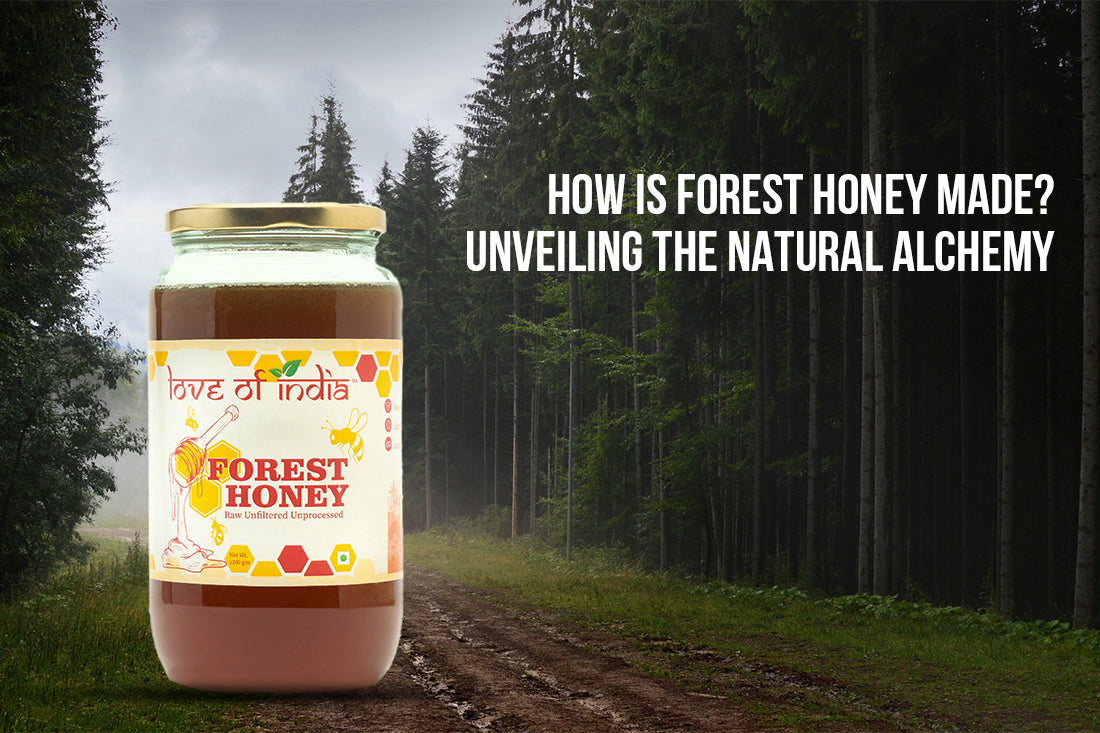Honey, often referred to as nature's golden elixir, has fascinated humanity for centuries. Among the many varieties, forest honey stands out due to its unique taste and natural goodness. But have you ever wondered how this delectable substance is made? Join us on a journey into the heart of the forest to unveil the secrets of how forest honey is made.
The Harvesting Process
1. Bee Foraging:
The process begins with bees venturing into the heart of the forest. These industrious insects flit from flower to flower, collecting nectar from a diverse array of wild blooms. In the forest, bees encounter an assortment of plants, each lending its distinct flavor to the nectar they gather.
2. Nectar Collection:
Using their specialized tube-shaped tongues, bees extract nectar from the flowers. They store this nectar in their honey sacs, a special organ designed to transport the precious cargo back to the hive.
3. Enzymatic Magic:
Once back at the hive, the bees add enzymes to the nectar. These enzymes break down the complex sugars in the nectar into simpler sugars, transforming it into honey. This enzymatic process is crucial, as it not only sweetens the nectar but also preserves it, making honey resistant to spoilage.
4. Honeycomb Storage:
The bees store the newly made honey in hexagonal beeswax cells within the hive, creating honeycombs. The bees fan their wings over the honeycombs to reduce moisture content, ensuring the honey thickens and matures.
The Unique Flavors of Forest Honey
Forest honey's distinctive taste comes from the wide variety of wildflowers that bees forage on. Unlike cultivated honey, which often comes from a single type of flower, forest honey is a complex blend of nectars from different plants. This diversity imparts a rich and nuanced flavor profile to the honey, ranging from floral and woody notes to hints of herbs and spices.
The Importance of Sustainable Beekeeping
Sustainable beekeeping practices are vital in preserving the delicate balance of forest ecosystems. Ethical beekeepers prioritize the well-being of their bees and the natural environment. By avoiding harmful chemicals and providing ample space for bees to forage freely, these guardians of nature ensure the continued production of high-quality forest honey without harming the environment.
Conclusion:
Nature's Sweetest Gift
our exploration into the making of forest honey has unveiled the intricate natural alchemy at play. It's not just a product; it's a masterpiece crafted by bees and nature's bounty.
Understanding the process behind forest honey creation is an appreciation of the artistry of the natural world. Every step, from flower to hive, showcases the harmonious balance of ecosystems.
To savor this exquisite creation, visit Love of India. Experience the pure essence of nature, bottled for your delight.
Taste Nature's Craftsmanship. Dive into the World of Forest Honey Today!- https://loveofindia.com/products/forest-honey

